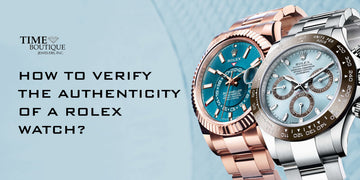How to Tell if Gold is Real: 11 Easy Ways to Ensure You Have the Real Thing
by Andy Jones on Feb 07, 2024

Gold is an iconic symbol of status, power, and wealth, historically associated with royalty. Discover the allure of this precious metal, synonymous with luxury, immortality, and prosperity.
The origins of gold mining are a subject of debate, with different accounts pointing to various time periods. Ancient Egyptians are believed to have started mining gold around 3,100 BCE. However, archaeological sites like the Asosa region of Ethiopia, with mines over 6,000 years old, and the Sakdrisi mine in Georgia, dating back 5,500 years, suggest that gold mining was practiced much earlier. It is even speculated that there are even older mines in South Africa.
Ancient Egyptians revered gold as the embodiment of the sun god Ra. This precious metal is renowned for its beauty, workability, and resistance to tarnish and rust. Although aqua regia can dissolve it, gold remains resilient. Despite being challenging to extract, with only 50 grams obtained from a ton of ore, it boasts exceptional electrical conductivity. As a result, gold finds extensive usage in computers and other technological devices. Discover the allure and significance of this luxurious metal.
Ways to Test Gold Authenticity
This article provides valuable insights on home-based tests to determine the authenticity of gold. Learn how to easily identify real gold and enhance your knowledge on this subject.
The Stamp Test: Look for Hallmarks

Gold jewelry often features a hallmark, a stamped identification of its content and manufacturer. These hallmarks are typically found in discreet locations, such as the interior of a ring.
The purity of gold is measured using karats and millesimal fineness. To determine if your gold is genuine, start with the hallmark test, also known as the magnifying glass test. It's a reliable method to check the authenticity of your gold.
Hallmarks include:
- Valid purity numbers under the Karat system (like 8k, 9k, 10k, 14k, 15k, 18k, 20k, 21k, 22k, 23k, and 24k)
- Valid purity numbers under the Millesimal Fineness system (333, 375, 417, 583 or 585, 625, 750, 833, 875, 916, 958 and 999)
- False purity numbers (anything other than the above)
- Manufacturer (like ESPO for Esposito, etc.)
Hallmarks are crucial in determining the purity and manufacturer of gold, providing credibility and ease of identification. While not foolproof, they enhance authenticity.
If the numbers on your gold jewelry indicate anything other than the ones mentioned above, it might be fake gold. For instance, numbers like 800, 925, and 950 do not refer to gold, but rather to silver. So, why would they put 925 on gold? Well, it's because this often indicates that the jewelry is gold plated with a sterling silver base.
When examining gold marks, it's important to determine if the value is measured in karats or millesimal fineness. Any other numbers would indicate counterfeit gold.
Not all real gold jewelry is marked with hallmarks. For instance, older pieces might have worn off their original markings over time. Discover the authenticity of gold jewelry and its markings.
Look for Letter Markings

Gold marked below 10k (41.7% purity) is classified as counterfeit.
Those familiar with varying levels of quality will easily identify the following markings. Gain insights into quality levels, markings, and more. Don't miss out on understanding quality standards!:
- GP
- GF
- GE
- GEP
- HGP
- HEG
If you're searching for genuine gold, it's best to steer clear of the mentioned designations as they all signify gold plating. To clarify, in the same order, they refer to:
- Gold Plated
- Gold Filled
- Gold Electroplated
- Gold Electro Plated
- Heavy Gold Plated
- Heavy Gold Electroplated
These markings indicate that a piece crafted from a distinct metal was partly coated with a small quantity of gold, resulting in its visual resemblance to a solid gold item.
When comparing gold purity levels, it's important to understand the corresponding percentages. For instance, 24k gold is 99.9% pure, while 18k gold is 75% pure. It's uncommon to find jewelry made of 100% pure gold due to its softness and lack of durability.
The Skin Test
Look for Bluish or Greenish Tint on Your Skin
The gold jewelry test is a simple method to determine its authenticity. By holding the piece between your hands for a few minutes, the reaction of your skin to the metal becomes evident. Real gold will not cause any discoloration, while fake gold may turn your skin black, blue, or green at the contact points.
If you're wearing liquid foundation, it's important to note that testing gold on your skin may cause black discoloration at the points of contact. To ensure a more reliable test, it's recommended to remove all makeup before conducting the test.
Testing gold on your skin while wearing liquid foundation may cause an exception to the usual procedure. When gold comes into contact with makeup, it can turn your skin black at those points. To ensure a more reliable test, it is recommended to remove all makeup before conducting the test.
Real gold jewelry is known for its nonreactive properties, ensuring that it won't cause any discoloration on your skin. Additionally, performing the makeup test can serve as a unique and effective way to verify the authenticity of gold.
Discolorations in gold jewelry may indicate the presence of alloys, which are mixtures of other metals. Explore our guide to understand the causes and solutions for gold jewelry discoloration.
The Size and Weight Test

This test is effective for evaluating both coins and bars.
- Compare a piece of gold you want to test with one that is already known to be real
- Use a set of calipers and a jeweler’s scale or use a Fisch Tester
Gold is known for its high density compared to other metals. If you come across a piece that appears larger than its weight or feels lighter than expected, it could be an indication of counterfeit gold.
Bullion coins are physical coins crafted from precious metals like gold, silver, palladium, or platinum. They are sought after as collectibles, investment assets, and a safeguard against inflation.
The Magnet Test
If you hold a powerful magnet close to a gold piece, observe any response. Genuine gold is not magnetic, so there should be no attraction. If there is, it's likely an indication that you don't have authentic gold.
However, it's important to note that certain base metals that can be blended with gold are non-magnetic, which can lead to inaccurate results. Therefore, it is recommended to supplement this test with a more reliable testing method for better accuracy.
The Float Test
To determine if you have real gold, simply drop the piece into a container of water. Gold, being dense, should sink to the bottom. If it doesn't float or hover, it's likely genuine gold.
The Ceramic Scratch Test
To determine if gold is genuine, take an unglazed ceramic plate or tile and gently scrape a piece of gold across it. Authentic gold will leave a distinct gold mark or trail, while other metals will leave a contrasting black trail.
The Water Test (Also know as the Density Test)

Calculation is done to achieve this. You require...
- A scale (to weigh the jewelry)
- A container of water and
- A way to measure the level in millimeters (to measure the water levels before and after the jewelry goes into the water)
To calculate, subtract the initial measurement from the final measurement. Then, divide the weight of the jewelry by the difference in water levels.
This gives you the density.
Real gold has a standard density of 19.3 grams per milliliter (19.3g/mL). It is a unique characteristic that sets it apart from most other metals. If your calculation yields a result close to this value, it is likely that you have real gold.
When determining the authenticity of gold using density, it's important to note that variations in density can exist among different types of gold. Understanding these differences is crucial in accurately assessing gold's genuineness.
For instance, the purity of gold affects its weight, with white gold being heavier than yellow gold. Therefore, the density of gold varies between 14k and 22k, ranging from approximately 12.9 to 17.7 g/mL for yellow gold and approximately 14 to 17.8 g/mL for white gold.
The Acid Tests
Vinegar Test
To perform this test, apply a small amount of vinegar to the metal, preferably in an inconspicuous area. This simple procedure helps in assessing the metal's compatibility.
If the metal is genuine gold, there will be no alteration in its appearance. However, if the metal is counterfeit gold, it will exhibit a change in color.
The Nitric Acid Test
Gold is an exceptional metal known for its resistance to corrosion, oxidation, and acid. To conduct a gold authenticity test, simply rub your gold against a black stone to leave a visible mark. Then, carefully apply nitric acid to the mark. This gold testing method ensures accuracy and reliability.
The acid has the ability to dissolve non-gold base metals, distinguishing genuine gold.
To determine the authenticity of gold, you can apply nitrohydrochloric acid, also known as aqua regia (a mixture of 75% nitric acid and 25% hydrochloric acid), to the mark. If the mark vanishes, it indicates the presence of genuine gold.
The Machine Tests

Electronic Tester (Sigma Metalytics Machine)
The Sigma Metalytics Precious Metal Verifier is highly accurate and calibrated to distinguish between metals in seconds. It's perfect for measuring bullion and coins. However, for jewelry testing, Sigma Metalytics recommends the Kee Gold Tester. Make informed decisions with our reliable and efficient metal testing equipment.
This machine utilizes electromagnetic waves to analyze the resistance of metals beneath surface materials like wrapping or plating. The meter display shows a specific resistance range, calibrated to identify and detect various metals.
XRF Spectrometer
This machine operates by transmitting X-rays through the gold, stimulating its atoms to a higher energy level.
When the energized atoms return to their normal state, they emit radiation. The machine continuously monitors and analyzes this radiation to accurately identify materials. This method is not only fast and precise but also outperforms other testing methods without causing any damage to the items being examined.
In fact, none of these methods cause any chemical or mechanical damage, ensuring the preservation of your piece's value and integrity. Rest assured that your valuable item is safe with our methods, which prioritize its protection and care.
The Fail-Safe Test
To accurately determine the gold content of your precious metal, it's best to consult a trusted jeweler for professional testing. This reliable method ensures precise results and guarantees the authenticity of your gold.
Jewelers offer various methods for authenticating gold content to the public. While experience is invaluable, the challenge lies in detecting sophisticated attempts to pass off lesser metals as genuine gold. Hence, jewelers often resort to machine verification to ensure accuracy and maintain trust.
Home tests can provide an indication of the authenticity of your gold, although they are not completely conclusive. While these tests are effective in showing the probability, it's important to note that no method is 100% foolproof.
To ensure the authenticity of your gold, it is recommended to have a knowledgeable and trustworthy jeweler assess it. Trust the expertise of experienced professionals to evaluate the genuineness of your precious metal.
Feel free to share this informative article with anyone who might find it useful. It contains valuable information and important points to consider. Help spread the knowledge and insights by sharing it with your network!
Conclusion: Embrace the Authenticity of Gold
At TB Jewelers, we believe in the timeless allure of genuine gold. Armed with these 11 easy methods, you can confidently distinguish real gold from its imitations, ensuring your collection shines with authenticity and value.
Unlock the beauty and prestige of real gold at TB Jewelers, your trusted destination for all things precious & valuable.




